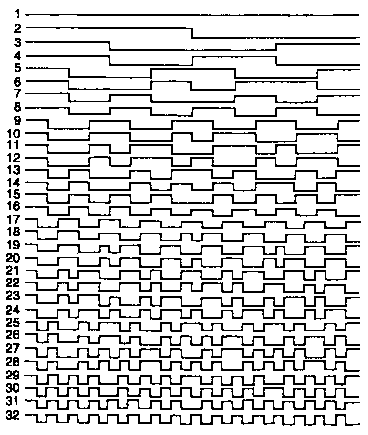
Figure 5: Order 32 Walsh functions. These kinds of functions serve as the voltage settings for the row lines in active addressing. (Reprinted from [Wer93])



In traditional multiplexing, the rows are addressed in sequence and only one at a time. The voltages set on the columns correspond to the pixel values in the row being addressed. This scheme leads to very low voltage selection ratios and, consequently, low contrast. A new method called active addressing has been developed to tackle this problem. In this scheme, several rows are addressed simultaneously in different patterns corresponding to orthogonal functions. A set of functions is orthogonal over a certain interval if the integral of the product of any two of the functions is 0 if the functions are different, and a constant if they are the same function. From signal processing theory, we can represent a given signal as a sum of differing amounts of these orthogonal functions. If we suppose the signal we wish to represent is the sequence of pixel values in a particular column of a display, then we can create that signal by applying the correct orthogonal functions to the row lines and certain voltages on the column line that correspond to the amounts of those functions we want. If we use the same functions to represent the signals in the other columns, then we can create a whole display by applying the correct voltages to all of the column lines in parallel.

Figure 5: Order 32 Walsh functions. These kinds of functions serve as
the voltage settings for the row lines in active addressing.
(Reprinted from [Wer93])
This is exactly the way active addressing works. Usually, Walsh functions are chosen as the orthogonal basis set since the amount of processing needed to calculate the needed column voltages is minimized when using these functions. The entire process is not perfect, at least from a signal processing point of view. The voltages applied on the column lines are not ``multipliers'' of the row function as they would be ideally---they merely add or subtract a certain amount from the voltage that is being applied to the row line.
Extra processing power is needed to calculate the correct voltages to be applied to the display, and the column lines must be capable of applying multi-level voltages. But this addressing scheme enables us to use a faster liquid crystal material since pixels are addressed several times per frame, so the liquid crystal needs to respond to voltage during only a fraction of the frame period. In addition, despite the non-ideal nature of the column line ``multipliers,'' the voltage ratio between on and off pixels is much higher, resembling that of an active matrix display.
The greatly increased contrast and switching speed is definitely worth the cost of the extra electronics needed to calculate the complicated column voltages. The makers of active-addressing displays, which are just coming on the market, claim that their switching speeds are nearly 50 milliseconds, which is considered the minimum needed for full motion video capability. This is compared to the 125-175 millisecond switching times of the latest traditional multiplexed passive matrix displays. They have also demonstrated contrast ratios near 50, whereas the contrast ratio of a traditional display is usually only around 15. These new displays are not at the same level as the highly superior active matrix displays, but they are very close, not to mention much more economical.


